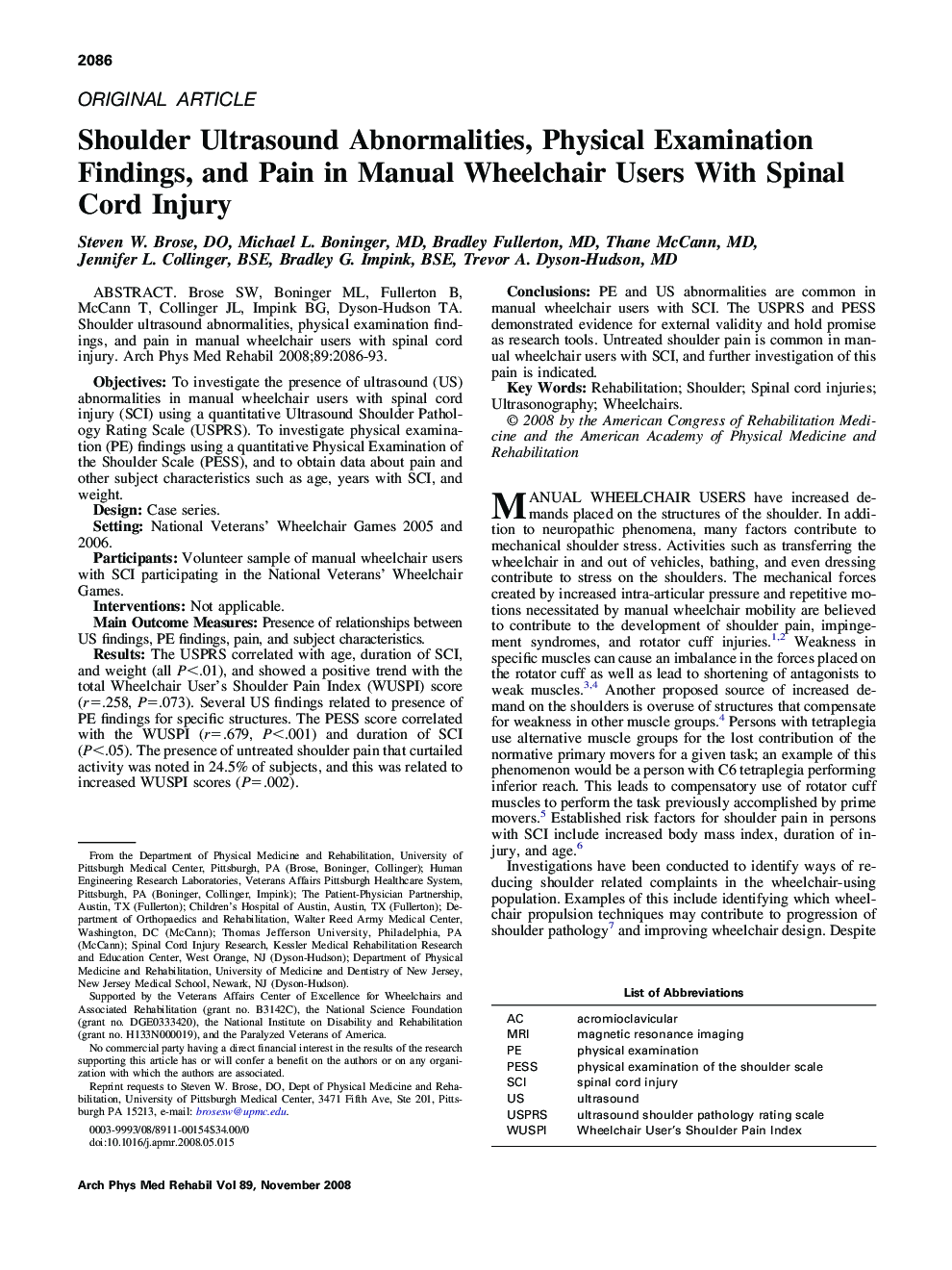| Article ID | Journal | Published Year | Pages | File Type |
|---|---|---|---|---|
| 3451275 | Archives of Physical Medicine and Rehabilitation | 2008 | 8 Pages |
Brose SW, Boninger ML, Fullerton B, McCann T, Collinger JL, Impink BG, Dyson-Hudson TA. Shoulder ultrasound abnormalities, physical examination findings, and pain in manual wheelchair users with spinal cord injury.ObjectivesTo investigate the presence of ultrasound (US) abnormalities in manual wheelchair users with spinal cord injury (SCI) using a quantitative Ultrasound Shoulder Pathology Rating Scale (USPRS). To investigate physical examination (PE) findings using a quantitative Physical Examination of the Shoulder Scale (PESS), and to obtain data about pain and other subject characteristics such as age, years with SCI, and weight.DesignCase series.SettingNational Veterans' Wheelchair Games 2005 and 2006.ParticipantsVolunteer sample of manual wheelchair users with SCI participating in the National Veterans' Wheelchair Games.InterventionsNot applicable.Main Outcome MeasuresPresence of relationships between US findings, PE findings, pain, and subject characteristics.ResultsThe USPRS correlated with age, duration of SCI, and weight (all P<.01), and showed a positive trend with the total Wheelchair User's Shoulder Pain Index (WUSPI) score (r=.258, P=.073). Several US findings related to presence of PE findings for specific structures. The PESS score correlated with the WUSPI (r=.679, P<.001) and duration of SCI (P<.05). The presence of untreated shoulder pain that curtailed activity was noted in 24.5% of subjects, and this was related to increased WUSPI scores (P=.002).ConclusionsPE and US abnormalities are common in manual wheelchair users with SCI. The USPRS and PESS demonstrated evidence for external validity and hold promise as research tools. Untreated shoulder pain is common in manual wheelchair users with SCI, and further investigation of this pain is indicated.
